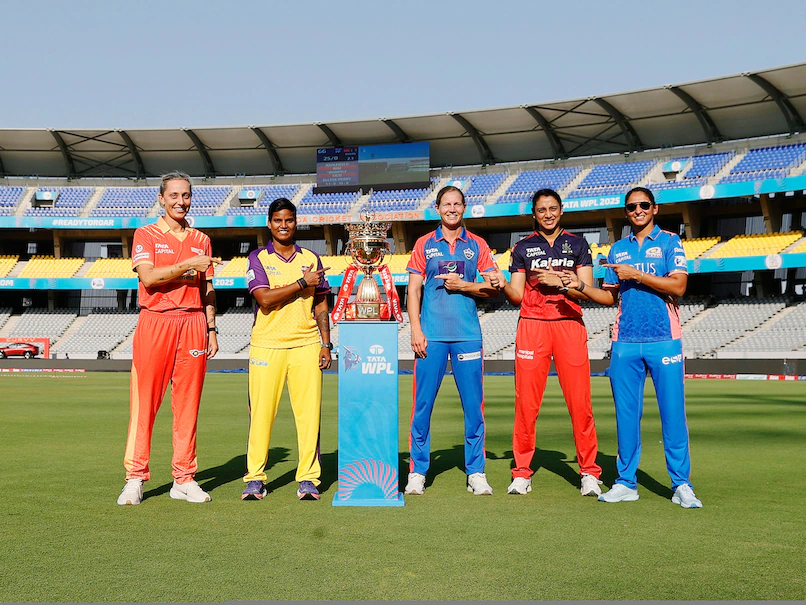
How Women’s Premier League (WPL) is Transforming the Landscape for Sportswomen in India

Introduction
The Women’s Premier League (WPL) has emerged as a game-changer in the Indian sports ecosystem, creating unprecedented opportunities for female athletes. Since its inception, WPL has not only given a platform to talented cricketers but has also significantly influenced the broader landscape of women’s sports in India. By ensuring visibility, financial stability, and motivation, WPL is fostering an era where women in sports are being taken more seriously than ever before.
Increased Recognition and Visibility
For years, women’s cricket in India struggled to receive the same attention as men’s cricket. However, the advent of WPL has dramatically altered this scenario. The league has attracted millions of viewers, with broadcasting deals and sponsorships reaching new heights. With prime-time telecasts, dedicated media coverage, and robust fan engagement, WPL has propelled women’s cricket into mainstream sports culture.
The increased visibility has inspired young girls across India to pursue cricket as a viable career option. Social media campaigns and endorsements featuring women cricketers have further helped in normalizing female participation in professional sports.
Financial Independence and Career Stability
One of the major struggles faced by women athletes in India has been financial insecurity. Before WPL, only a handful of women cricketers had lucrative contracts, making it difficult for aspiring players to sustain themselves. However, the league has changed the financial dynamics entirely.
Franchises are now offering multi-million rupee contracts, ensuring financial independence for women players. Sponsorship deals, advertisements, and prize money have increased substantially, empowering female athletes to focus solely on their performance without worrying about financial constraints.
Development of Grassroots Talent
WPL has had a trickle-down effect on grassroots-level cricket in India. With increasing interest in women’s cricket, academies and state-level associations have started investing in young girls’ training programs. More scholarships, sponsorships, and government-backed initiatives are being introduced to develop talent at an early stage.
The success of WPL has encouraged young girls from rural and semi-urban areas to take up cricket, breaking social and cultural barriers. This growing pipeline of talent ensures a bright future for women’s cricket in India.
Breaking Stereotypes and Gender Bias
For decades, sports in India have been predominantly male-dominated. The WPL has played a pivotal role in challenging gender stereotypes by proving that women’s cricket can be equally thrilling and commercially viable.
With increasing television ratings, packed stadiums, and competitive gameplay, WPL has silenced critics who believed women’s cricket lacked excitement. It has also played a crucial role in changing societal attitudes towards women in sports, encouraging families to support their daughters in pursuing cricket professionally.
Global Recognition and Opportunities
The Women’s Premier League is not just making waves in India but is also gaining international recognition. With foreign players participating in the league, Indian cricketers are getting the much-needed global exposure. This has helped Indian women players improve their skills and adapt to international playing standards.
Additionally, several Indian players have received offers from international leagues, further expanding their professional opportunities. This cross-border exchange of talent benefits both Indian and foreign players, fostering a more inclusive and competitive cricketing environment.
Role Models and Inspirational Stories
WPL has given rise to several inspirational figures who are now role models for aspiring sportswomen. Players like Smriti Mandhana, Harmanpreet Kaur, and Shafali Verma have become household names, inspiring thousands of young girls to dream big.
Beyond cricket, the success of WPL is influencing women in other sports as well. The newfound enthusiasm and investment in women’s cricket have set a precedent for other women-centric leagues in sports like football, kabaddi, and hockey.
Economic Growth and Sponsorship Boom
The commercial success of WPL has opened doors for more brands to invest in women’s sports. Big-ticket sponsorships from leading companies have proven that women’s cricket is a profitable venture. With increased endorsements and partnerships, WPL has elevated the overall marketability of female athletes.
Moreover, the surge in merchandise sales, ticket revenues, and broadcasting rights has demonstrated that there is a significant audience for women’s sports. This economic growth is instrumental in securing the future of women’s cricket in India.
Government and Corporate Support
The success of WPL has also led to increased government involvement in promoting women’s sports. Policies supporting women’s participation in sports are being strengthened, and funding for infrastructure development is increasing.
Corporates are also stepping up to support women cricketers through scholarships, sponsorships, and employment opportunities. The corporate sector’s involvement ensures that talented female cricketers receive the necessary resources to excel in their careers.
Conclusion
The Women’s Premier League has revolutionized the sports landscape for women in India. By offering recognition, financial security, and professional opportunities, WPL is breaking barriers and inspiring a new generation of female athletes. As the league continues to grow, it promises to create an even more inclusive and competitive environment for women’s sports in India.
With increased viewership, sponsorship, and grassroots development, WPL is not just a cricket tournament—it is a movement that is empowering sportswomen and reshaping India’s sporting future. The impact of WPL extends beyond cricket, setting the stage for a more equitable and thriving sports culture for women in India.
